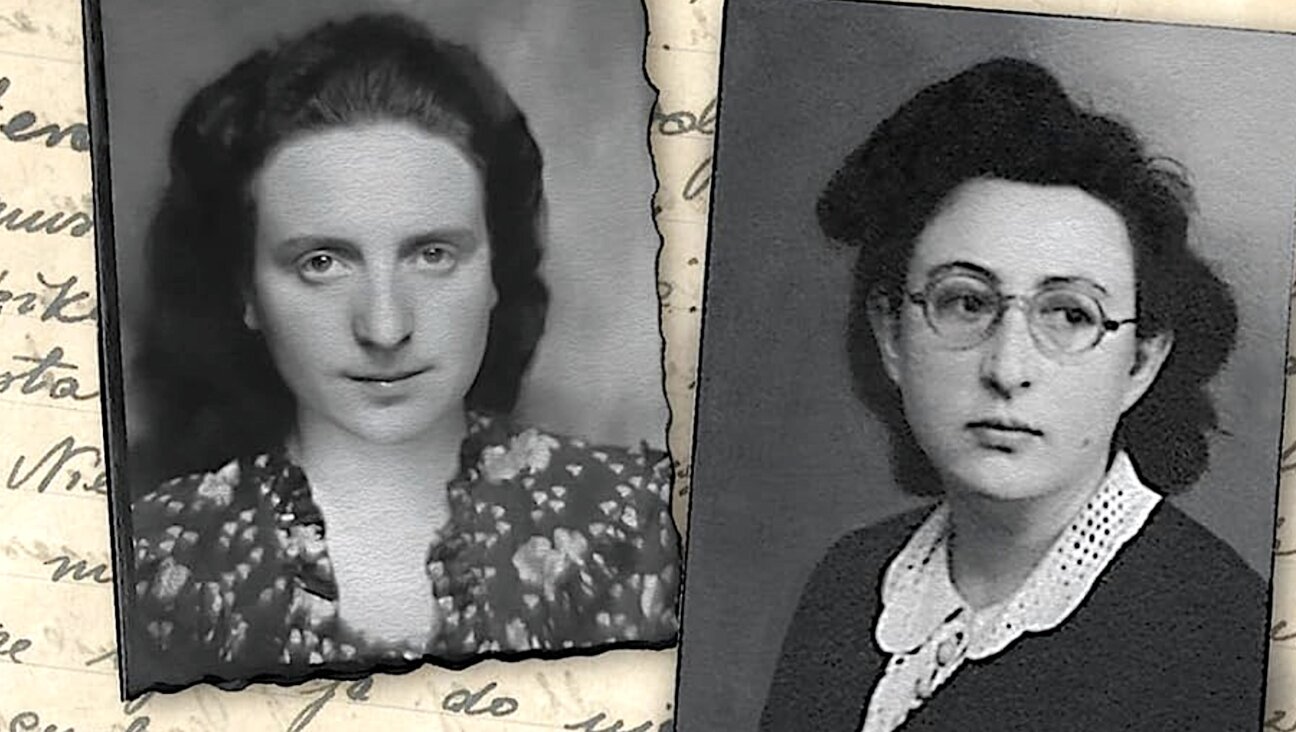More Orthodox Women Dance With Scroll for Simchat Torah

Graphic by Angelie Zaslavsky
(Haaretz) — Just how progressive is your local Orthodox synagogue?
Probably the best way to find out is to pay a visit during Simchat Torah, the holiday that starts at sundown on Wednesday, and take note: Are women sitting behind the mechitza – the partition that separates them from the men – looking bored and possibly even fed up, while the male congregants are dancing in circles on the other side with Torah scrolls in their arms? Or are the women also taking part in the fun, kicking up a storm with the Torah scrolls on their side of the room as well?
The answers to these questions will likely determine where a synagogue falls in the spectrum of Orthodoxy. And a growing number are leaning toward including women in their festivities during this holiday, which celebrates the end and beginning of a new annual cycle of weekly Torah readings.
“It has spread rapidly in recent years,” says Debbie Weissman, one of the founding members of Congregation Yedidya in Jerusalem. In 1980 it became the first Orthodox synagogue in Israel to have women carry the Torah scrolls in the seven rounds of dancing, known as hakafot, which take place both on the evening and morning of the holiday. Some communities also hold a round of hakafot (from the Hebrew root for “periphery,” to evoke the circular dancing) at night after the holiday has ended.
Ayellet Cohen-Wieder, a board member at Kolech, an organization of Israeli Orthodox feminists, estimates that more than 100 religious congregations in the country now encourage women to dance with the Torah scrolls on Simhat Torah.
In many of them, she says, women are also called up to read from the Torah, which is considered a special honor. “It’s something that began in Jerusalem but has meanwhile spread to the entire country,” she says. “As I see it, it’s kind of a grassroots form of social protest, with women demanding their equal rights.”
`Self-imposed inhibition’
Barbara Sofer, a writer and public-relations executive, recalls her frustrations years ago trying to get women at her former synagogue in Jerusalem to dance around with the Torah on this holiday.
“For many women, it’s kind of a self-imposed inhibition,” she says. “So what I did was bribe the women at my synagogue to get them to carry the Torah. I’d offer them eye makeup. I got many of them to dance that way, but when I stopped offering the eye makeup, they wouldn’t dance anymore. My children finally told me to stop complaining and move to a different synagogue, which is what I did.”
Sofer, who today belongs to Yedidya, says she’s saddened that many of her female friends at less progressive synagogues have stopped attending services on Simhat Torah. “They tell me they don’t go anymore because it’s so boring just watching the men,” she says.
Even before Yedidya became the first Orthodox synagogue to encourage women to participate in Simhat Torah festivities, women were dancing with the Torah on this holiday in private homes.
It was back in the 1970s, recalls Weissman, that the late Pnina Peli – widely considered the founding mother of Orthodox feminism – introduced the practice. And it was around that time as well that women began dancing with the Torah at the modern-Orthodox Lincoln Square Synagogue on the Upper West Side of Manhattan. For many years, Yedidya was “the only show in town,” as she puts it, but 13 years ago, Shira Hadasha, another Orthodox feminist congregation in Jerusalem, opened.
But even there, recalls Tova Hartman, a founding member, some resisted. “There were people who would ask me then why we needed this,” she recounts. “They didn’t know what they were missing because they hadn’t experienced it before. In some ways, you can draw an analogy here with women’s voting rights. Many women were resistant to the idea initially because they had no idea what it was to vote.”
Asserting their rights
In recent years, reports Hartman, hundreds of women from all over Jerusalem and even other parts of the country flock to Shira Hadasha on Simhat Torah to participate in hakafot.
Weissman sees it as a natural progression. “Once Orthodox women became involved in Torah education, they could no longer be denied the right to dance with the Torah,” she notes.
But the recent surge in the number of Orthodox synagogues that have come to include women in their Simhat Torah festivities is undoubtedly connected to the spread of partnership minyanim around the country in the past few years. These encourage women to participate more in Orthodox prayer services. Today, roughly 20 partnership minyanim are active in Israel.
Social media have also played a role in spreading the word. “Many women who danced with the Torah for the first time began sharing their thoughts on Facebook, and it encouraged others to try,” Cohen-Wieder notes.
Another push has come from the direction of Beit Hillel, a relatively new organization of close to 200 modern-Orthodox rabbis in Israel who support greater roles for women in prayer services.
Last year, just before Simhat Torah, the group issued a position paper urging Orthodox congregations to have women dance with the Torah on this holiday. “We determined that it does not violate Jewish law for women to carry the Torah,” says Rabbi Ronen Neuwirth, the director of Beit Hillel. “For us it was important that Simhat Torah become a more inclusive holiday.”
Neuwirth says that to the best of his knowledge, in response to this ruling more than 100 Orthodox congregations had women participate in hakafot last year. “And we expect even more this year,” he says.
But not all Orthodox rabbis are convinced. A year ago, the Federation of Synagogues in the U.K., whose members tend to be more hard-line, issued a ruling saying that according to Jewish law, it was “strictly forbidden” for women to dance with the Torah.
Rabbis who forbid the practice maintain that a woman who is menstruating – considered unclean, according to Jewish law – is not allowed to touch a Torah scroll, and since it is impossible to determine which women in a congregation are menstruating, all should be banned. Their detractors maintain that Jewish law does not prevent a menstruating woman from touching a Torah.
The fact that some Orthodox rabbis are rising up against the trend, says Weissman, should be seen in a positive light. “A backlash is often a sign that you’ve been successful,” she notes.
For more stories, go to Haaretz.com or to subscribe to Haaretz, click here and use the following promotional code for Forward readers: FWD13.




















